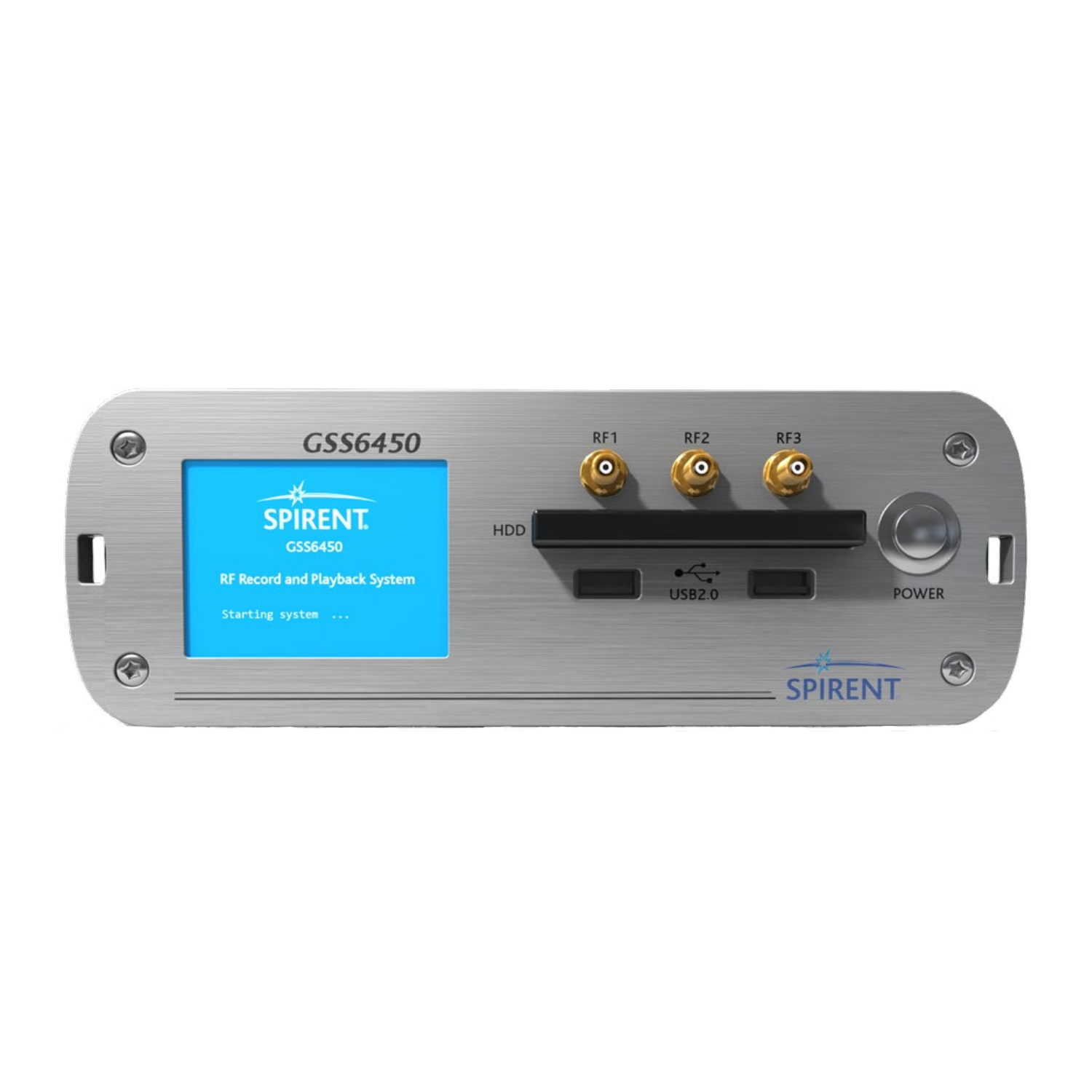It's a specialized solution that helps you better measure automotive functional testing.

Vehicle Ethernet
V2X
Automation
GNSS
WIFI
FAST ETHERNET

What the GSS6450 does
With the Spirent GSS6450 RPS, it’s simple and quick to capture GNSS & other RF signals as they are received for subsequent use in a laboratory test environment.
The GSS6450 RPS digitises and stores the RF signals from the real RF environment. These recordings are then made available for subsequent playback, faithfully reproducing propagation effects such as multipath, fading, obscuration and interference to allow testing of GNSS chipsets, receivers and systems under realistic conditions. You save project, travel and engineering costs while improving product performance, quality and time to market.
The flexibility of the GSS6450 to record multiple frequency bands concurrently means the RPS can be used to test multi-GNSS chipsets and devices in wireless, cellular, automotive, navigation, aerospace, and defence and survey applications. The user can select different bit depths depending on their application and storage requirements. The GSS6450 RF RPS includes three RF I/O ports. RF1 has optimised filtering for the recording and playback of GNSS signals, while RF2 and RF3 offer wider bandwidth to cover Cellular and Wideband signals respectively.
For interference and jamming
testing in-built Spectrum Analysis software is available
Key Features
RF1 GNSS
l Multiple Constellations and Frequencies*
n GPS, GLONASS, Galileo, BeiDou, QZSS
n L1, L2, L5, B3
l Bandwidth (10, 30, 50, 60 or 80 MHz, depending on configuration)
l Up to 4 bands can be recorded
RF2
Cellular
l Operates between 690 MHz and 2400 MHz
l Up to 4 bands can be recorded
l Preset frequency options plus user defined centre frequency and
bandwidth options of 10, 30, 50, 60 or 80 MHz.
RF3
Wideband
l Operates between 100-6000MHz
l A Single maximum 80MHz band on the RF3 port can be recorded/played
back
n Can be set to 10, 30, 50, 60 or 80 MHz
l Preset frequency options plus user defined centre frequency.
System
l Bit depth ( I&Q – 2, 4, 8 or 16 bits) *
l Disk space – 2 TB internal, (1, 2, 4 or 7.5 TB removable external
drive also available for purchase).
l Control from front panel Touch Screen, over WiFi, WebServer or
scripts
l Highly Portable, complete with shoulder strap
l Fully integrated, no PC or external drives required
l Embedded Spectrum Analysis software
l OCXO used on record and playback for high frequency stability
l Record & playback of up to 4 video streams using webcams
l USB 3.0 supported. Allows data transfer to or from an external hard
drive
l In-built GNSS receiver (L1-GPS, GLONASS, Galileo, BeiDou), can
record NMEA data
Recorder
l Record any 4 (depending on configuration) signals simultaneously
l Record 2 bit signals for playback on a GSS6425
l Internal battery (record time up to 1.5 hours) and vehicle DC power
adapter
l Single touch record
l Synchronous and asynchronous storage of external data, without
losing channels or compromising bit depth
l Event markers
Playback
Functionality
l Attenuation across all channels or control per channel
l Browser control over network
l Batch file playback
l Configure files to play
l File start and stop times
l Start at any point in a file, to a resolution of 1 microsecond
l Scripts allow inclusion in automatic test routines
l GSS6425 Compatibility mode to play back 2bit files recorded on a
GSS6425
l Output of raw I/Q data on Aux port (Two most significant bits of
each channel).
CANbus
l Two in built-High-Speed CAN interfaces which allow CAN bus data to
be recorded as synchronous data without the need for an external interface
unit.
n The CAN interface is a passive device which records the signal
levels seen on the CAN bus. It does not provide bus acknowledgements etc. When
replaying CAN Data onto a CAN bus with other transmitting nodes, the GSS6450
will transmit data even if another node is already transmitting causing
corruption of data on the CAN bus. It is not recommended to replay CAN data
onto a vehicle or any other CAN Bus in a safety critical application.
l With the (optional) PCAN Router FD two CAN FD or High-Speed CAN
busses can be recorded, and played back, synchronously with the RF data.
n Input or output CAN messages can be filtered.

